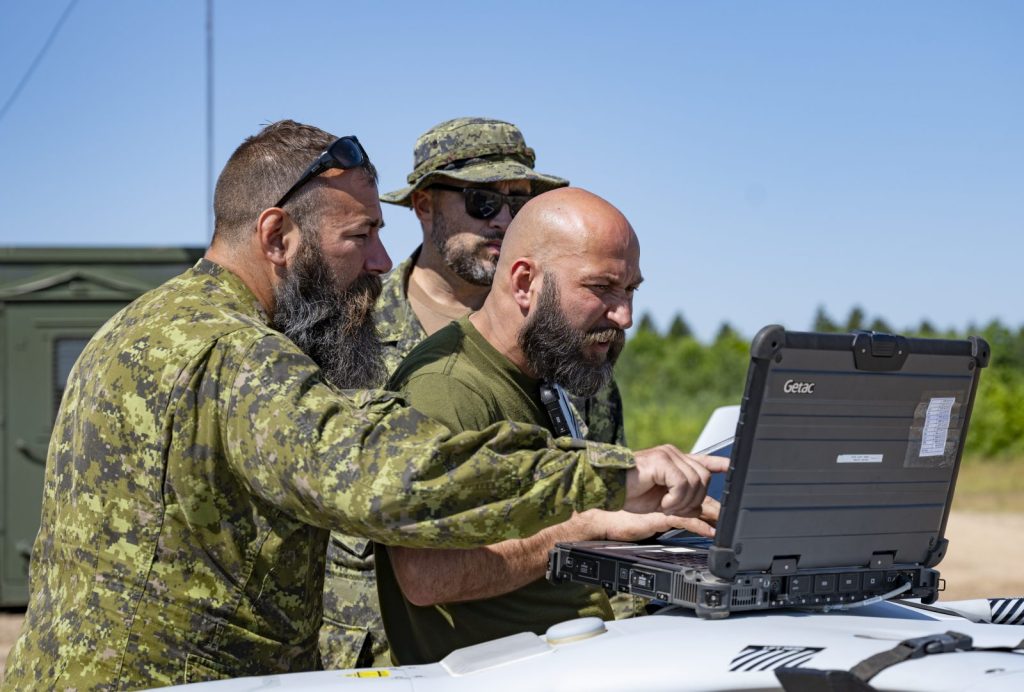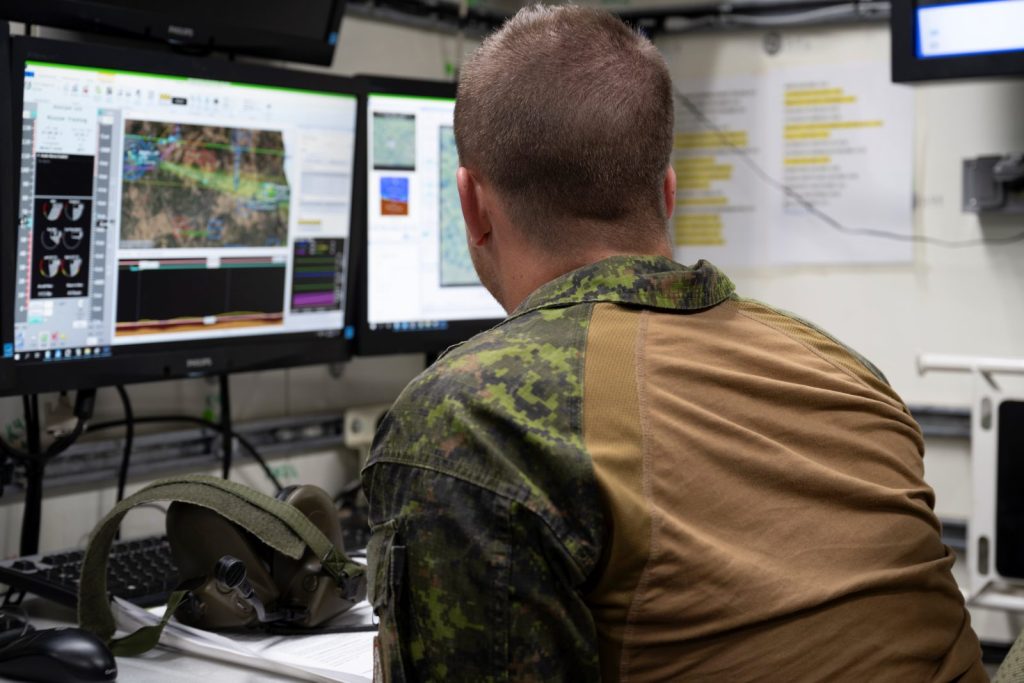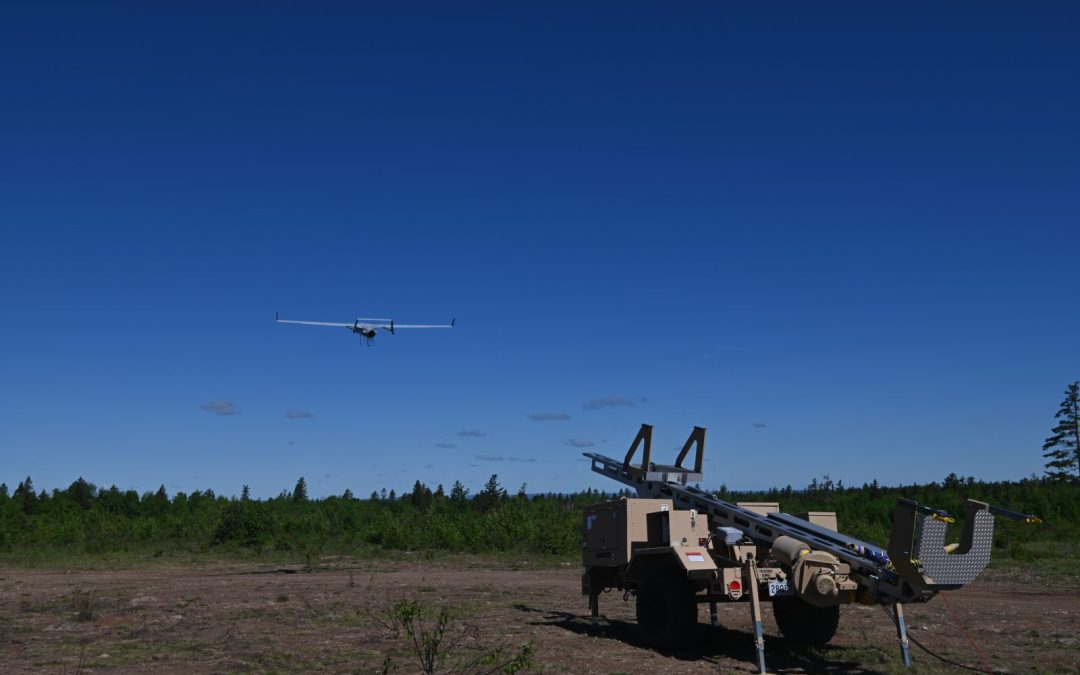by Ian Coutts
Latvia if necessary but not necessarily Latvia. That, to borrow from William Lyon Mackenzie King, Canada’s famously waffling prime minister, is the situation that 129 Battery, home of the Army’s CU -172 uncrewed aerial system (UAS), finds itself in these days.
“It’s the main operation of the Canadian Armed Forces right now, so we are training for it. But there is no decision that has been made that we at 129 Battery are being deployed,” said Major Lucas Jamois-Paradis, who has spent much of his career in the battery and in June became its commanding officer.
In the meantime, they train and wait.
Getting the battery to this point has been a long time coming. The Army acquired the CU-172 Blackjack — the Canadian designation for the Boeing Insitu RQ-21A — back in 2017, as a replacement for the leased CU-165 ScanEagle, which was used in Afghanistan to good effect, flying more than 30,000 hours on operations.
The Blackjack was originally lodged with 4th Artillery Regiment (General Support) in Gagetown, and the Army had hoped that gunners using the new system would achieve their full operational capability (FOC) by 2021.
The COVID pandemic threw a wrench into the process. There were other delays as the structure of the regiment was rejigged in spring 2022, under the Royal Regiment of Canadian Artillery, to solidify a home for the small UAS suite of aircraft, launch and recovery systems, and ground control stations in 129 Battery. From there, the battery had to become experts with the technology and clear a series of hurdles, key among them gaining an airworthiness certificate before they were ready to deploy.
In May 2023, just before Jamois-Paradis took command, the battery achieved FOC. The certificate issued by Transport Canada states that “the plane is ready to fly, that the program behind the plane — how we train people — is all in regulation with Transport Canada,” he said. The certificate is only a provisional one at this point, but that’s every bit as good from their point of view, he noted. The battery is now ready to deploy – when, where and if needed.
The CU-172 Blackjack gives the Army a critical reconnaissance capability. Twin-boomed and propeller driven, larger and faster than the ScanEagle, the Blackjack can reach a ceiling of 6,000 metres and has a cruising speed of 60 knots. The drone’s maximum flying duration is 16 hours, although in practice, said Jamois-Paradis, “the maximum amount is 15 hours. We do this all the time.”
It is equipped with a range of sensors including day and night full-motion video cameras, an infrared marker, and a laser range finder, as well as a communications relay package. Its effective communications range is a little over 100 kilometres.
Talking about a Blackjack in isolation is misleading in some ways. It’s not so much an aircraft as it is a system. Each one consists of five drones, three ground control stations, and two launch and recovery systems. The battery currently possesses two such systems.
Standard operational practice is to have two UAS aloft, each controlled by a separate ground control station, with a third held in reserve in case either of the first two should fail, explained Jamois-Paradis.
With both systems in use, he can put aloft four drones. Generally, the computers in the ground control stations do the flying, based on what they are programmed for, with the operators overseeing the flight and the sensor feeds.

Members of the 4th Artillery Regiment (General Support) take part in a Small Unmanned Aircraft System (SUAS) Detachment Commander course during Exercise Guardian Commander July 2023. Photo: WO James Roberge
As a new technology, the UAS represents something of a jurisdictional quandary. Those that are large enough to need a runway, such as the General Atomics MQ-9 Reaper that Canada will likely acquire under the Remotely Piloted Aircraft System project, end up in the Royal Canadian Air Force. If they are small enough to operate in the field, they go to the Army, Special Operations Forces, and the Royal Canadian Navy.
The CU-172 can fill key aspects of the Army’s intelligence, reconnaissance and intelligence requirements, but “the drone is a good enabler of fires,” Jamois-Paradis noted.
Though the use of the system has evolved since the CU-172 was first acquired, and it now “has multiple jobs and options, it is still largely artillery-centric,” he said. “I think that’s why it resides with us for now since we have the pool of people who have trained with it for so long.”
Any possible deployment would likely see one of 129 Battery’s three troops deployed to Latvia, with one of the Blackjack systems. At home in Gagetown, a second troop would be training on the second system, preparing to deploy, while the third troop would be the next in line.
“Then we would rotate that triangle during the operation,” Jamois-Paradis said.

Photo: WO James Roberge
The 129 Battery troop would be one of several capabilities 4th Artillery Regiment has proposed deploying to Latvia, said Lieutenant-Colonel Natasha Skidmore, the commanding officer. Other sub-units could include an air defence battery, featuring a radar detachment, a short-range air defence troop and other elements, all drawn from the regiment.
Together with the CU-172 troop, these would be valuable assets for the Canadian-led multinational battle group in Latvia as it is expanded to the strength of a brigade by 2026, she said. The Army will be adding personnel to the regiment in the coming years, which would see 129 Battery grow from its current strength of 100 personnel to about 140, although “150 is my dream,” admitted Jamois-Paradis.
Deployment to Latvia remains up in the air, but there’s little doubt of the role and importance of UAS in the conflicts in Ukraine and elsewhere.
“Drones are part of the way we fight now,” said Jamois-Paradis. “When we go on large-scale training exercises, drones are a part of the planning exercise. They’ve been the flavour since the Afghanistan war, and now with Ukraine, they’re using a thousand drones a month — they are a new way of doing war.”
In Latvia, should it happen, 129 Battery will be one of the key intelligence collectors for the Canadian brigade. “We’re adapting to that, and our training reflects that we’ll be the intelligence collector if we deploy.”

